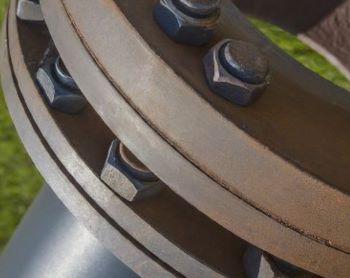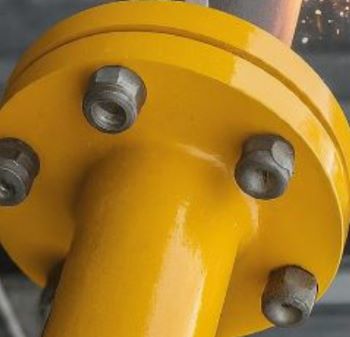Flanges are essential components in piping systems, connecting pipes, valves, and other equipment. But how do they operate, and what are the many types?
This beginner’s guide will walk you through the basics of bolt flanges. It will help you feel confident about these crucial parts.
What are Bolt Flanges?
A bolt flange is a type of flange that uses bolts and a gasket to create a secure and leak-proof connection between two piping components. It consists of several key parts:
➡️ Flange body:
➡ This is the main body of the flange, typically made of cast iron, steel, or stainless steel. It can have various shapes, depending on the flange type.
➡️ Bolting holes:
➡ These holes are evenly spaced around the flange periphery and allow for the insertion of bolts to connect the flanges. The number, size, and pattern of these holes vary depending on the flange type and application.
➡️ Gasket surface:
➡ This is a raised or grooved surface on the flange face where the gasket sits. The gasket creates a tight seal between the two flanges, preventing leaks. Gaskets come in various materials like rubber, Teflon, and metal, depending on the application’s pressure, temperature, and fluid type.
How Do Bolt Flanges Work?
Using a bolt flange is a relatively straightforward process:
-
Aligning the flanges: The two flanges to be connected are carefully aligned, ensuring their bolting holes and gasket surfaces are perfectly matched.
-
Inserting bolts: Bolts are inserted through the corresponding holes in both flanges.
-
Tightening the bolts: The bolts are progressively tightened in a specific sequence (called a bolt tightening pattern) to create a controlled and even clamping force on the gasket, ensuring a leak-proof seal.
There are various types of flange connections based on bolting patterns and gasketing solutions. Some common examples include full-face, ring-joint, and tongue-and-groove connections.
Common Types of Bolt Flanges
Several types of bolt flanges serve different purposes and applications:
➡️ Blind flanges: These have a solid body with no opening and are used to seal the end of a pipeline.
➡️ Slip-on flanges: These slide over the pipe end and are welded to the pipe. They offer ease of installation and are suitable for moderate pressure applications.
➡️ Threaded flanges: These have internal threads that screw onto a threaded pipe end. They are commonly used in low-pressure applications and offer easy assembly/disassembly.
➡️ Welding neck flanges: These have a cylindrical neck that is welded to the pipe. They offer superior strength and are suitable for high-pressure and high-temperature applications.
Selecting the Right Bolt Flange
Choosing the appropriate bolt flange requires considering several factors:
➡️ Pressure rating: The flange must be able to withstand the maximum pressure in the system.
➡️ Temperature rating: The material must be compatible with the operating temperature range.
➡️ Fluid compatibility: The material and gasket type must be resistant to the transported fluid.
➡️ Size and weight: The size and weight of the flange should be suitable for the application and space constraints.
➡️ Cost and availability: Consider the balance between cost and availability when making your choice.
Tips for Using Bolt Flanges
Here are some helpful tips for beginners working with bolt flanges:
-
Choose the right tools: Ensure you have the appropriate wrenches and, for critical applications, a torque wrench to ensure proper bolt tightening.
-
Follow the bolt tightening sequence: Tighten the bolts in a specific sequence to create a uniform clamping force and prevent leaks.
-
Select the appropriate gasket: Choose a gasket material compatible with the application’s pressure, temperature, and fluid type.
-
Prioritize safety: Always wear safety glasses and gloves when working with flanges and follow proper safety procedures.
Conclusion
Bolt flanges are crucial components in various piping systems. Understanding their basics, types, and selection criteria empowers you to make informed decisions for your projects. Remember, for complex applications, consulting with professionals is always recommended.
We hope this guide provided a valuable introduction to bolt flanges. Feel free to explore further through online resources or consult experienced professionals for more advanced applications and projects.
Post time: Apr-17-2024





